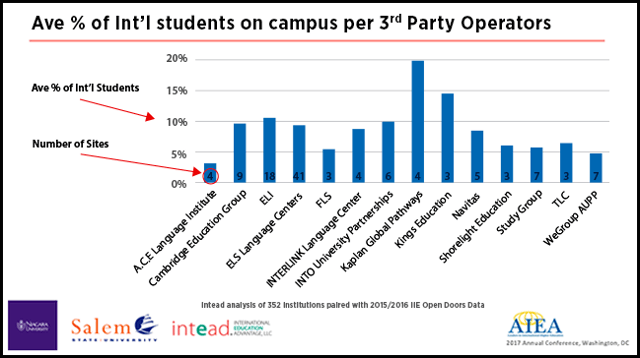
A couple of weeks ago, we were at AIEA talking about language schools as university pathways for international students. We had the honor of presenting with David Silva, Provost of Salem State University, and Deborah Curtis, Director of the Niagara University Center for Language, Culture and Leadership.
With the global changes we are witnessing and the political landscape here in the US, this turbulent time is taking a toll on language school enrollments. These programs act as early indicators of trends in international recruiting, and we can see that many of them are starting to face challenges. These challenges are likely going to spread to international student enrollment more broadly over the coming months.
Yet, any significant enrollment declines we see coming will likely be limited to specific regions (think Middle East, Mexico, perhaps India) . This will be harsh enough for everyone in our industry. And still, there will be bright spots where students are less concerned and student interest in the US may, in fact, increase (think Russia).
Time will tell, and our market research is helpful as you develop your marketing/recruiting plans. We work hard to make your planning targeted and effective in each region. Your use of language programs is just one tool among many to draw students to your campus and your programs.
Read on to see what our language school research uncovered and to download our AIEA presentation slides.
On-campus language programs can be run by universities or by 3rd parties. The adoption of 3rd party language school providers has grown substantially over the last decade. More rapidly over the past 3 years.
What we see is that, on average, those institutions building and managing their own language program tend to have a higher percentage of international students on campus than those using 3rd party providers. Our theory behind these results: language programs require hands-on management. Those institutions hiring 3rd party providers tend to behave in ways that delegate responsibility to the provider and neglect the overall management of the program. The result is that marketing and operational responsibilities are not managed as well as when the institution is responsible for everything.
This is not to say that a 3rd party provider can’t do the job. In fact, many of these relationships have been hugely successful. Our point is simply that successful programs have strong leadership and defined responsibilities that are managed well from start to finish. That level of reliable, consistent oversight and execution are more common when a single party owns the whole process.
Much like building an agent network, a language program will fail if you sign a contract for others to do the work and simply put that contract in a drawer expecting everything to fall into place. Regardless of the operational model, time and effort and an engaged leadership are ALL required for success. Not an amazing insight there. Just plain common sense.
With that, take a look at our slides. The last one has some clearly defined next steps for recruiting.


